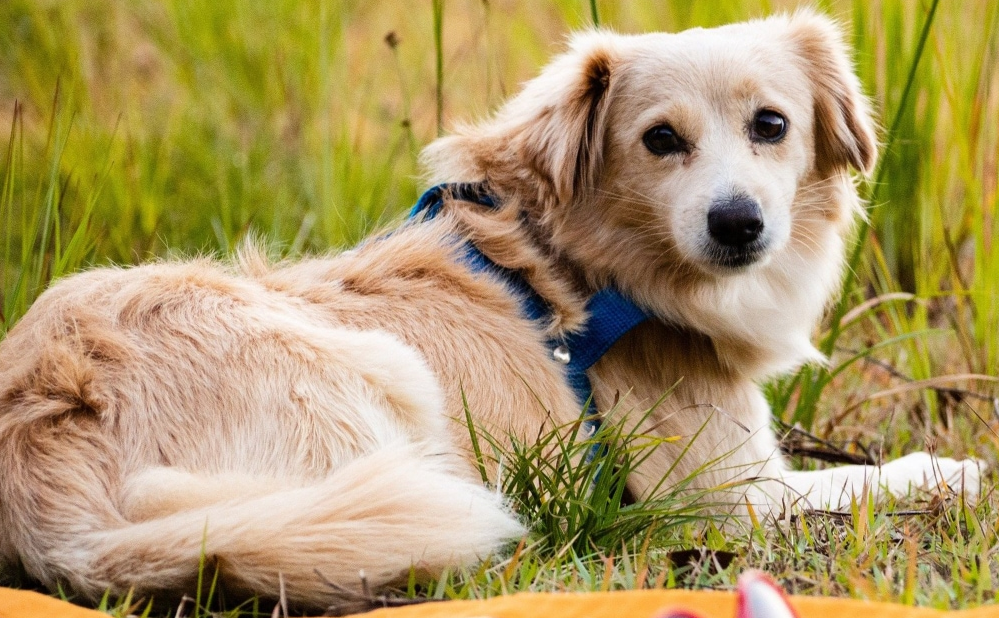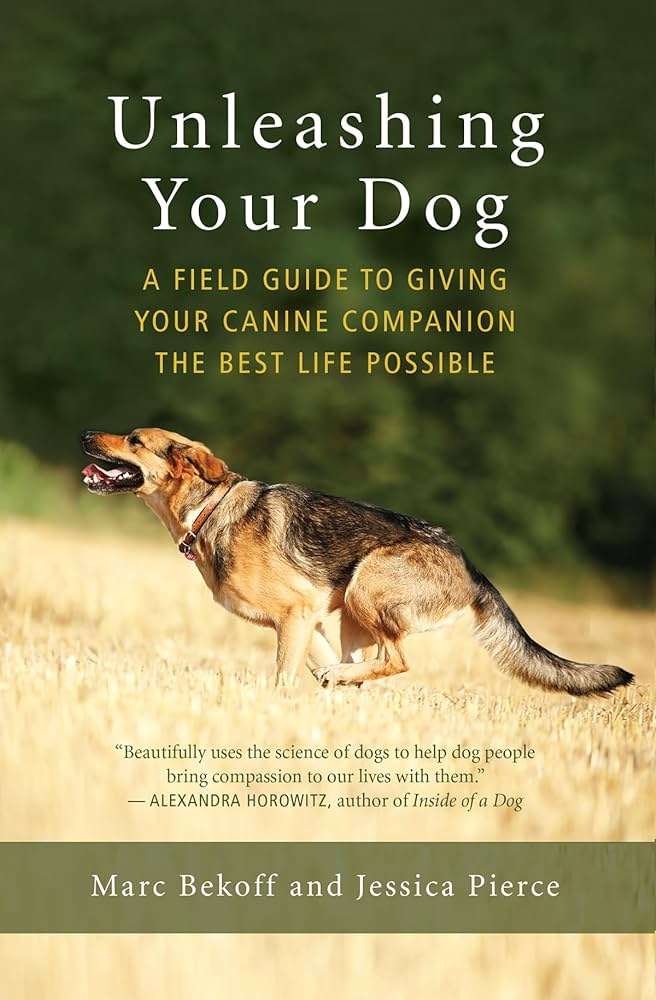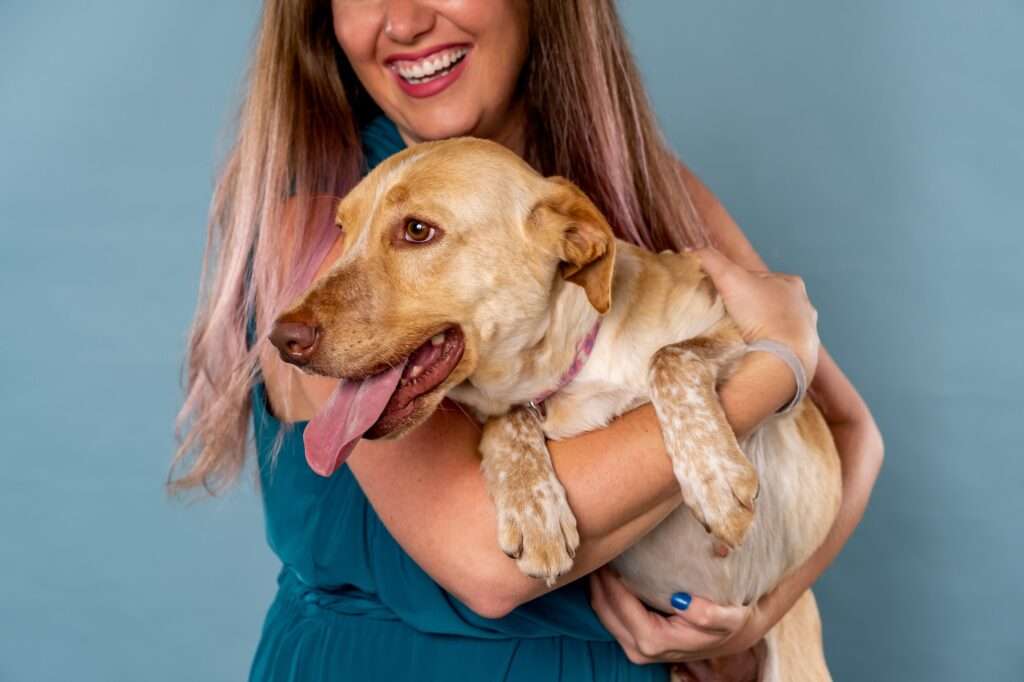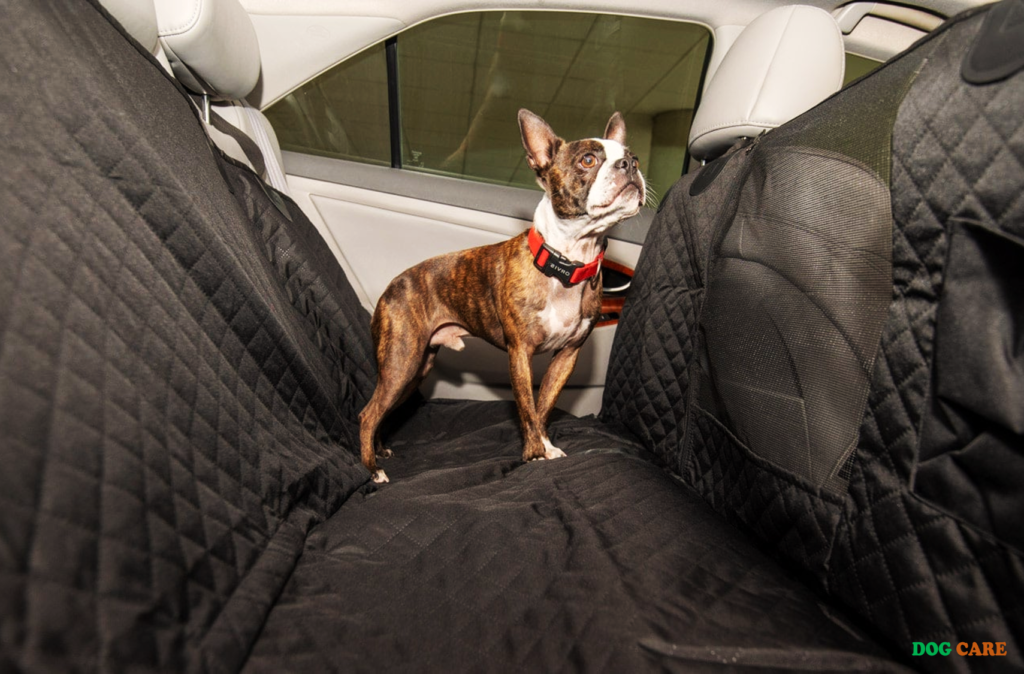Dog Nail Cut Too Short How Long to Heal – A dog’s nail will typically take around 2 weeks to heal if cut too short. When a dog’s nail is cut too short, it can cause pain and bleeding.
This commonly occurs when the quick, the live part of the nail that contains blood vessels, is accidentally cut. It’s important to avoid cutting the quick when trimming your dog’s nails to prevent injury. If a dog’s nail is cut too short and begins to bleed, you can apply styptic powder or cornstarch to stop the bleeding.
It’s recommended to monitor the wound closely and keep it clean to prevent infection. The healing time can vary depending on the severity of the injury, but on average, it takes about 2 weeks for the nail to fully heal. During this time, it’s crucial to provide your dog with a comfortable environment and limit their physical activity to promote healing.
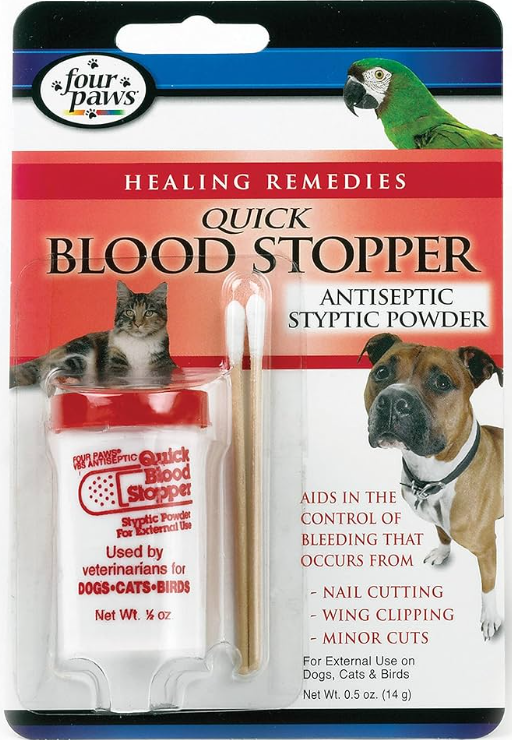
Understanding : Dog Nail Cut Too Short How Long to Heal
Understanding a dog’s nail and how long it takes to heal when cut too short can help pet owners provide proper care and treatment. Patience is key as nails can take several weeks to grow back, but with proper care and attention, healing can be promoted.
Understanding a dog’s nail Structure of a dog’s nail The structure of a dog’s nail is similar to that of a human’s. Each nail consists of an outer hard covering called the nail shell, which is protective in nature, and a sensitive inner portion known as the quick. The quick contains blood vessels and nerve endings, making it extremely important to handle with care during nail trimming. Importance of regular nail trimming Regular nail trimming is crucial for maintaining your dog’s overall health and well-being.
Longer nails can cause discomfort and pain for your furry friend, as they can easily get caught in objects or splayed apart. Trimming the nails regularly helps prevent this, contributing to better posture, improved mobility, and reduced risk of injuries. Potential risks of cutting a nail too short Cutting a dog’s nail too short can lead to various complications, so it is important to exercise caution. If the quick is accidentally cut, it can result in bleeding and cause significant discomfort to your pet.
Additionally, cutting the nail too short may lead to infections, ingrown nails, and even changes in your dog’s walking pattern. Hence, it is advisable to stay vigilant and be gentle during the trimming process. In conclusion, understanding the structure of a dog’s nail and the importance of regular nail trimming is essential for responsible pet ownership. While trimming, it is vital to be cautious and avoid cutting the nail too short to prevent any potential risks or complications. Regular nail maintenance is not only beneficial for your dog’s physical well-being but also ensures they can continue to enjoy a pain-free and active lifestyle.
Signs And Consequences Of Cutting A Dog’s Nail Too Short
Cutting a dog’s nail too short, also known as quicking, can lead to immediate signs of pain and discomfort for your furry friend. Understanding these signs and the potential complications that can arise is crucial for providing proper care and treating the injury effectively.
Immediate Signs Of A Quicked Nail
A quicked nail occurs when the nail is trimmed too closely to the sensitive quick, which houses nerves and blood vessels. This can happen if you accidentally cut too much of the nail or if your dog’s quick is naturally longer than expected. Some immediate signs to look out for include:
- Bleeding: When the quick is cut, it may bleed. You may notice small droplets of blood or even a steady flow.
- Pain and discomfort: Your dog may show signs of pain or discomfort by yelping, pulling away, or limping immediately after the nail is cut too short.
- Licking or chewing: Dogs may instinctively lick or chew at the affected nail area due to the discomfort.
Possible Complications And Pain For The Dog
Although a quicked nail injury may seem minor, it can lead to significant pain and potential complications if not properly addressed. Some potential complications and discomfort your dog may experience include:
- Infection: If the quicked nail is not kept clean or if bacteria enters the wound, it can lead to an infection which may cause further pain and delay healing.
- Sensitivity and tenderness: The quicked area of the nail will remain sensitive for some time, causing discomfort with any pressure or movement.
- Altered walking or weight-bearing: Dogs may compensate for the discomfort by altering their gait and putting less weight on the affected paw, leading to imbalances and potential strain on other parts of the body.
Consequences Of Not Treating The Injury Properly
Failure to adequately treat a quicked nail injury can have long-term consequences for your dog’s well-being. It is crucial to provide proper care to prevent further complications and promote healing. Some consequences of not treating the injury properly include:
- Chronic pain: Without proper treatment, the quicked nail may continue to cause pain and discomfort for your dog, interfering with their daily activities and overall quality of life.
- Delayed healing: Neglecting to treat the injury can lead to slow healing or the formation of proud flesh, which can further delay the recovery process.
- Emotional trauma: Dogs that experience significant pain during a quicked nail incident may develop fear or anxiety around nail trimming in the future, making it more challenging to provide routine care.
Being aware of the signs and consequences of cutting a dog’s nail too short is essential for maintaining your pet’s health and well-being. By promptly recognizing the signs of a quicked nail, ensuring proper treatment, and implementing preventative measures, you can help your dog heal and prevent future occurrences.
Steps To Take After Cutting A Dog’s Nail Too Short
Accidents happen, and if you’ve accidentally cut your dog’s nail too short, it’s important to take immediate action. Severe injuries can occur when a dog’s nail is cut too close to the quick, a sensitive area that contains blood vessels and nerves. To help your canine companion heal and alleviate any discomfort, follow these steps:
Assessing The Severity Of The Injury
First, assess the severity of the injury. Look for signs of bleeding, pain, or infection. It’s crucial to determine the extent of the damage before proceeding with any further steps.
Providing Immediate Relief And Stopping Bleeding
To provide immediate relief, apply pressure to the nail using a clean cloth or gauze pad. This helps to stop the bleeding. Additionally, you can dip the nail in styptic powder or a cornstarch mixture to aid in clotting and prevent further bleeding.
Contacting A Veterinarian For Guidance
While immediate first aid measures can be taken at home, it is essential to contact a veterinarian for further guidance. Your vet will be able to assess the severity of the injury and provide specific instructions on how to best care for your dog’s nail as it heals.
Implementing Home Care For The Injured Nail
Home care is crucial to ensure proper healing of the injured nail. Here are a few steps you can take:
- Keep the nail clean by gently washing it with mild soap and water. Avoid using any harsh chemicals or solutions.
- Apply an over-the-counter antibiotic ointment to help prevent infection. Consult your veterinarian for recommended ointments.
- Keep your dog’s activity level low to reduce the risk of further injury and allow the nail to heal.
- Monitor the nail closely for any signs of infection, such as swelling, redness, or discharge. Contact your vet if you notice any concerning symptoms.
Remember, it may take some time for your dog’s nail to heal properly. Be patient and provide the necessary care to ensure a smooth recovery.
Expected Healing Process
The healing process for a dog’s nail cut too short can vary, but it generally takes about 2-3 weeks to fully heal. During this time, it’s important to keep the area clean and protected to prevent any further damage or infection.
Timeframe For Initial Healing
When a dog’s nail is cut too short, it can be a painful experience for both the dog and their owner. It’s essential to understand the expected healing process to ensure proper care and a quick recovery.
The timeframe for the initial healing of a dog’s nail cut too short can vary depending on several factors. Generally, you can expect the healing process to begin within a few days. During this time, the exposed quick, which is the sensitive tissue inside the nail, starts to gradually heal.
Factors Affecting Healing Time
The healing time of a dog’s nail cut too short can be influenced by various factors, including:
- The severity of the cut: A deep cut may require a longer healing time compared to a shallow cut.
- The dog’s overall health: A healthy dog may experience faster healing compared to a dog with underlying health issues.
- Proper wound care: Regular cleaning, bandaging, and keeping the area clean can contribute to a more rapid healing process.
- Age of the dog: Younger dogs tend to heal faster than older dogs.
- General immune system: A strong immune system can assist in the healing process.
Monitoring Signs Of Infection
While your dog’s nail cut is healing, it’s crucial to monitor for any signs of infection. Infections can hinder the healing process and cause further complications. Look out for the following signs:
- Redness, swelling, or discharge around the wound area.
- Excessive licking or chewing of the paw.
- Foul odor coming from the wound.
- Lethargy or decreased appetite.
- Increased pain or discomfort.
If you notice any of these signs, it’s important to seek veterinary care promptly. Early detection and treatment of an infection can prevent it from worsening and aid in the healing process.
Importance Of Follow-up Vet Visits
After your dog’s nail has been cut too short, it’s essential to schedule follow-up visits with your veterinarian. These visits serve several purposes:
- Assessment of the healing progress and any potential complications.
- Professional cleaning and dressing of the wound if necessary.
- Expert advice and guidance on the proper home care needed to ensure a complete recovery.
- Monitoring of the overall health status of your dog.
Regular vet visits provide reassurance and support throughout the healing process and help you address any concerns or questions you may have.
Tips For Preventing Future Nail Cutting Accidents
Accidentally cutting your dog’s nails too short can be a painful experience for both you and your furry friend. However, with proper knowledge and care, you can prevent such accidents from happening in the future. Here are some useful tips to help you avoid any mishaps during your dog’s nail trimming sessions:
Choosing Appropriate Nail Trimming Tools
When it comes to trimming your dog’s nails, using the right tools is crucial to ensure a safe and successful grooming session. Invest in a pair of high-quality dog nail clippers that are specifically designed for your dog’s size and breed. Make sure the clippers are sharp and well-maintained to avoid any discomfort or injuries. Additionally, you may also consider using a dog nail grinder if your dog is not comfortable with clippers.
Understanding Proper Nail Trimming Technique
Proper nail trimming technique is essential for preventing accidents and keeping your dog’s nails at an appropriate length. Before starting, familiarize yourself with the anatomy of your dog’s nails. The quick, which contains blood vessels and nerves, is the part you should avoid cutting. It’s a good idea to have some styptic powder or cornstarch on hand to stop bleeding in case of an accidental trim. Trim the nails in small, gradual increments, avoiding the quick. Take breaks if needed to keep your dog relaxed and comfortable.
Recognizing The Right Length To Cut
Knowing the correct length to trim your dog’s nails is crucial for preventing injuries. The general rule of thumb is to trim the nails just above the quick, but it may vary from dog to dog. Consult with your vet or a professional groomer to determine the appropriate length for your specific breed. Regularly inspect your dog’s nails and check for signs of overgrowth, such as clicking sounds as they walk or nails touching the ground. Keeping an eye on the nails’ length will help you maintain them at a safe and comfortable level.
Seeking Professional Help If Unsure
If you’re unsure about trimming your dog’s nails yourself, don’t hesitate to seek professional help. A professional groomer or a veterinarian can ensure a safe and stress-free nail trimming experience for your furry friend. They have the experience and knowledge to handle different breeds and can give you valuable tips and guidance to prevent future accidents. Prioritize your dog’s comfort and safety above all else, and don’t hesitate to ask for expert assistance when needed.
Taking Care Of Your Dog’s Nails Overall
Taking care of your dog’s nails overall is essential for their health and well-being. Proper grooming not only keeps their paws looking tidy, but it also prevents discomfort, pain, and potential health issues. In this article, we will explore the various aspects of caring for your dog’s nails, including a regular grooming routine, considerations for dogs with dark nails, alternatives to home nail trimming, and the importance of keeping nails properly maintained. Let’s dive in.
Regular Grooming Routine For Nails
A regular grooming routine is crucial for maintaining your dog’s nails. By trimming their nails every 2-4 weeks, you can prevent them from becoming too long and causing problems. Start by gathering the necessary tools: dog nail clippers, styptic powder, and treats to reward your furry friend. Find a quiet and comfortable spot where you can easily access your dog’s paws. Be gentle but firm while trimming, avoiding the quick – the pink area inside the nail that contains blood vessels and nerves. If you accidentally cut too close to the quick, apply styptic powder to stop any bleeding.
Considerations For Dogs With Dark Nails
Dogs with dark nails can make it challenging to determine where the quick is, increasing the risk of cutting too short. To minimize the chances of this happening, shine a bright flashlight on the underside of your dog’s nails. This will help you identify the translucent quick, making it easier to trim without causing any harm. Take your time and be cautious when trimming dark nails. If you’re unsure, seek guidance from a professional groomer or veterinarian.
Alternatives To Home Nail Trimming
Some dogs may be uncomfortable with nail trimming, making it a stressful experience for both of you. In such cases, alternatives to home nail trimming can be explored. One option is visiting a professional groomer regularly, where trained individuals can trim your dog’s nails with expertise and care. Another alternative is using a nail grinder, which files down the nails gradually. This method can be less intimidating for dogs who are sensitive or fearful of clippers. However, it’s important to introduce the grinder slowly and desensitize your pup to the sound and sensation.
Importance Of Keeping Nails Properly Maintained
Keeping your dog’s nails properly maintained is crucial to their overall well-being. Overgrown nails can cause discomfort and pain while walking, potentially leading to joint issues and musculoskeletal problems. Long nails are also more prone to breakage, which can be painful and increase the risk of infections. Regular nail trimming promotes healthy paws, reduces the chances of injuries, and contributes to your dog’s overall comfort and mobility.
Conclusion
To conclude, understanding the recovery time for a dog’s nail after being cut too short is crucial for their well-being. Remember, patience is key during the healing process, as it can take several weeks for the nail to fully regrow.
By providing gentle care, maintaining cleanliness, and seeking professional help if necessary, you can ensure your furry friend’s speedy recovery and prevent any further discomfort. Keep an eye on your dog’s reaction and don’t hesitate to consult a veterinarian for guidance.
Your dog’s health and happiness depend on it.
